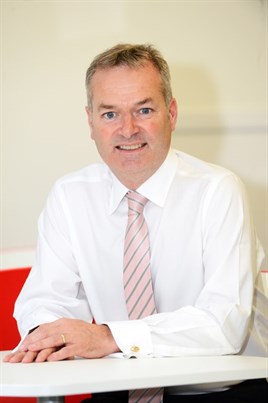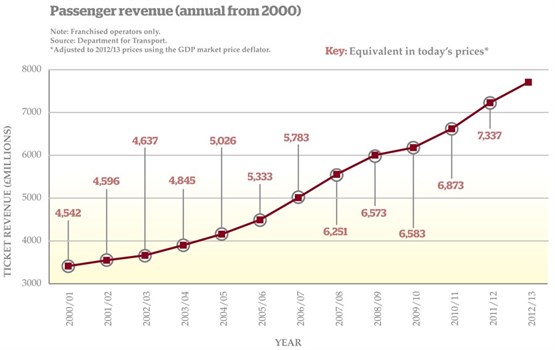I therefore approached this interview with considerable scepticism. On the one hand, I support 100% the notion, aims and reality of the RDG - it just seems to me to have misfired from the outset, leading to disappointing outcomes and limited impact. It’s to RDG’s credit, given the strength of my criticism, that its officers were so relentlessly welcoming, cheery and (on the face of it) open.
In Round One of our on-the-record encounter, we met at ATOC’s rather swish tower block offices in the City of London. Martin Griffiths was throughout friendly, jovial and refreshingly ready to answer any question, so we started with a simple one.
What is RDG actually for?
“The Rail Delivery Group was a response to Sir Roy McNulty’s review of the efficiency of the rail industry - but we are going beyond that now,” he replies.
“RDG is about strategic leadership, and for me its greatest strength is that for the first time we have the chief executives of train operating companies, freight companies and our partners at Network Rail sitting together discussing the major issues affecting the railways today, and thinking about how we deal with the positive challenges that we have over the next 20 years.”
Industry-wide solutions
That’s great in outline - but specifically?
He answers: “How do we actually take the railway forward and accommodate the growth that I think we will get - and what does that mean for capacity, rolling stock strategy and efficiency?”
“Some of that the private operators will have their own views on, and some of that will be in the domain of bidding and what you can do as an individual company. But a lot of those issues are industry-wide, and so we need to find industry-wide solutions.
“For years we have had this adversarial relationship with Network Rail, about whose fault was it, but the passengers really don’t care. Their issue is: ‘why was my train late and what are you going to do about it?’ Unless we are prepared to find the best answers, we are not going to make any progress.”
But surely this has been obvious for years? The silo thinking he’s talking about has been highlighted by commentators from the first days of the newly privatised railway in the mid-1990s.
Griffiths does not disagree, which, he says, explains RDG’s search for the executive basis it found in its marriage with ATOC. He claims that the operating community has matured, and that there is now a real desire for partnership and collaboration (not least with Network Rail) on those areas of genuine industry-wide interest.
“We just didn’t have a structure,” he explains. “That’s why last November we decided to put together a strategic leadership organisation with an executive capability that can allow us to more aggressively pursue some of the things on our agenda.
“So we merged with the existing ATOC team, seconded some Network Rail staff, and created that executive structure under Michael Roberts as the director general.
“For the first time we felt we had real firepower, and although we still have a way to go on the journey, we need to think through exactly the role that we play. We need to highlight what we bring, and work in partnership with whatever government we have. One of my goals as we approach the next General Election is to see how we do that in the short term, while more importantly making that relationship work for the industry in the longer term.”
Griffiths is honest about efficiencies. He is, for example,cautiously optimistic that Network Rail will deliver as planned in Control Period 5, and that the 20% efficiency savings promised to the Transport Select Committee by then NR Chief Executive Sir David Higgins and then RDG Chairman Tim O’Toole will probably be delivered. And he candidly concedes that some potentially major savings highlighted by McNulty are theoretically possible, but practically unlikely in today’s political context.













